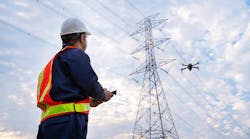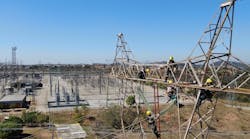An increasing number of customers are using their mobile device to access their utility's website, which is a less satisfying experience than their experience on a desktop computer, according to the J.D. Power and Associates 2013 Utility Website Evaluation Study (UWES) released today.
Key findings:
- Overall customer satisfaction with the usefulness of utility websites is 416 (on a 500-point scale).
- Two key tasks driving overall satisfaction with utility websites are the ability to review account information and make a payment.
- Satisfaction with the desktop experience for electric-only utilities is 424, outperforming gas-only utilities at 410.
The study finds that 26 percent of customers visit their utility's website via their smartphone, compared with 16 percent in 2012. Customer satisfaction with their mobile website experience averages 403 (on a 500-point scale). In comparison, overall satisfaction among customers using a desktop computer to visit their utility's site is 416.
Satisfaction is highest for the most-often-used, high-volume functions, such as logging in, reviewing account information and making a payment. However, satisfaction is lower for more complicated functions, such as setting up an online account, researching energy-saving information, finding gas leak information and updating utility service.
"Many utility companies are using sites developed as long as a decade ago, and some do not have the budget to update or upgrade their sites," said Andrew Heath, senior director at J.D. Power and Associates. "As a result, the sites haven't evolved to keep up with customer expectations."
The study, now in its second year, examines the usability of utility websites by examining 12 tasks: set up an online account; account log in; view consumption history; review account information; make a payment; research energy saving information; update service; report outages; view outages; locate contact information; perform account and profile maintenance; and locate gas leak info. The study provides utility companies with an objective assessment of the usability of their website; establishes performance benchmarks; provides improvement recommendations; and identifies best practices across the industry. In addition, the study compares customer satisfaction with utility websites to satisfaction with websites in other industries, such as insurance and credit card.
Heath notes that customers' expectations for their utility's website are based on their experiences on other sites. The two most important tasks driving overall satisfaction with utility websites are reviewing account information and making a payment. Although customer satisfaction with the ability to review account information is higher than it is with most of the other tasks, it still falls short when compared to the same task on a credit card company's website.
"If customers struggle to use the website, then they often go to other channels, such as calling the utility company's call center, which is a much more costly transaction for the utility," said Heath. "Investing in the website may save utility companies money, as well as increase overall customer satisfaction."
One critical time when customers may need to access their utility's website from a mobile device is during a power outage. "If they can't use their computer or their phones are out, customers may not have any other means to report an outage or get information regarding when power will be restored," said Heath. "During a power outage, communication with customers is critical for immediate and long-term satisfaction with the utility company. Customers know this, and satisfaction with outage tasks is highest when customers use a mobile app to complete these tasks."
Among the 75 utility companies included in the study, AEP, OG& E and Southern Company perform particularly well in overall customer satisfaction with utility websites when viewed from a desktop computer. DTE Energy, FirstEnergy and Public Service of New Hampshire perform well in overall satisfaction among customers who view the website from a mobile device.
The 2013 Utility Website Evaluation Study (UWES) is based on evaluations from more than 11,000 electric and/or gas residential customers, with 2,819 providing feedback about their online experience using a mobile device. The 75 largest U.S. electric and/or gas companies are included in the study, which was fielded in February and March 2013.

